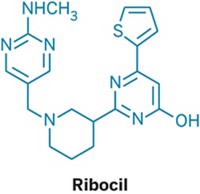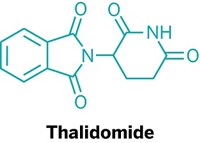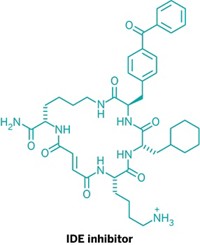Advertisement
Grab your lab coat. Let's get started
Welcome!
Welcome!
Create an account below to get 6 C&EN articles per month, receive newsletters and more - all free.
It seems this is your first time logging in online. Please enter the following information to continue.
As an ACS member you automatically get access to this site. All we need is few more details to create your reading experience.
Not you? Sign in with a different account.
Not you? Sign in with a different account.
ERROR 1
ERROR 1
ERROR 2
ERROR 2
ERROR 2
ERROR 2
ERROR 2
Password and Confirm password must match.
If you have an ACS member number, please enter it here so we can link this account to your membership. (optional)
ERROR 2
ACS values your privacy. By submitting your information, you are gaining access to C&EN and subscribing to our weekly newsletter. We use the information you provide to make your reading experience better, and we will never sell your data to third party members.
Synthesis
Small Molecule Rescues Mutant Hormone Receptor
August 18, 2008
| A version of this story appeared in
Volume 86, Issue 33
Chemical rescue—a procedure in which a small molecule boosts the bioactivity of an impaired protein—has been used to restore function to a mutant thyroid hormone receptor associated with two diseases (Angew. Chem. Int. Ed., DOI: 10.1002/anie.200801742). The receptor, TRβ, plays a role in cell differentiation and maintenance. But a nonfunctioning mutated version, TRβ(H435Y), is associated with cancer and resistance to thyroid hormone (RTH). A. Quamrul Hassan (now an MIT postdoc) and John T. Koh at the University of Delaware speculated that a small molecule might tweak the mutant receptor’s hydrogen-bonding system and thus restore its function. By screening pyridine analogs, they identified a compound they named QH13, which does that. In cells, QH13 restores TRβ(H435Y) to a level of activity similar to that of TRβ in the presence of its natural ligand, triiodothyronine, and it binds much more selectively to TRβ(H435Y) than triiodothyronine does to TRβ. Koh and coworkers hope QH13 will help reveal the role of mutant thyroid hormone receptors in cancer initiation and progression and note that the small molecule could lead to anticancer and anti-RTH therapeutics.






Join the conversation
Contact the reporter
Submit a Letter to the Editor for publication
Engage with us on Twitter